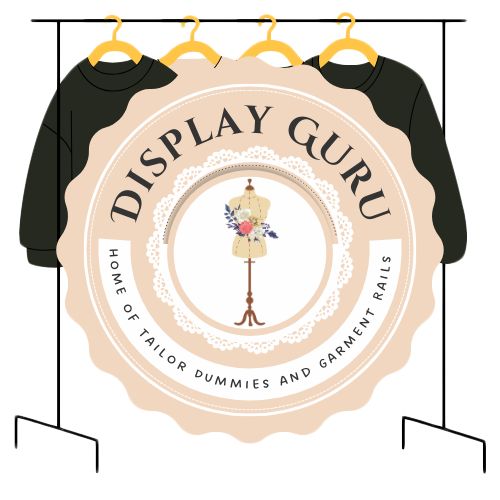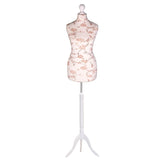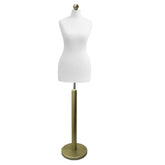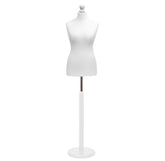Finding the Best Fabrics for Suits
When it comes to picking the right fabric for a suit, the answer always depends on the season, the event, and your own personal taste. If you're looking for one suit to do it all, from board meetings to formal weddings, wool is the undisputed champion. But for those blistering summer days and more laid-back affairs, you simply can't beat the breezy comfort of linen and cotton.
Navigating the World of Suit Fabrics
Think of choosing a suit fabric like picking the right tyres for your car. You wouldn't use summer tyres in a snowstorm, and the same logic applies here. The cloth is everything. It determines how the suit drapes over your frame, how comfortable you feel after hours of wear, and how well it holds up to a busy schedule. It even dictates how often you'll be heading to the dry cleaner's.
Getting a handle on the key differences between the main players is the first real step towards building a wardrobe that's both stylish and genuinely practical.

We're about to dive into the most common options, but it helps to see the bigger picture first. For a wider look at the materials that make up our clothing, this a comprehensive guide to natural fabrics for clothes is a great resource.
At-a-Glance Guide to Common Suit Fabrics
To get us started, here’s a quick-reference table that breaks down the most popular choices. Think of it as a cheat sheet for your next trip to the tailor.
| Fabric Type | Best Season | Breathability | Wrinkle Resistance | Formality Level |
|---|---|---|---|---|
| Worsted Wool | All-Year | Good | High | High (Business) |
| Flannel | Autumn/Winter | Low | Medium | Medium |
| Tweed | Autumn/Winter | Low | High | Low (Casual) |
| Linen | Spring/Summer | Excellent | Low | Low (Casual) |
| Cotton | Spring/Summer | Very Good | Low-Medium | Medium |
| Silk | All-Year (Luxe) | Good | Low | High (Formal) |
This table gives you a solid foundation, but the real expertise comes from understanding the nuances behind each fabric.
Key Factors to Consider
Before we get into the nitty-gritty of weaves and weights, let's establish your North Star. Keep these three points in mind, and you'll always be guided toward the right choice.
- Seasonality: Is this suit for the sweltering heat of August or the biting chill of December? A feather-light linen is a godsend in the summer but will leave you shivering at a Christmas party.
- Occasion: The sharp, structured silhouette of a worsted wool suit commands respect in a formal business meeting. A relaxed garden party, on the other hand, is the perfect stage for a more casual cotton or linen number.
- Maintenance: Let's be honest, how much effort are you willing to put in? Wool has a natural springiness that helps it resist wrinkles, while linen embraces a certain rumpled charm that requires frequent pressing if you want to keep it sharp. Proper care is key, and that includes knowing the best practices for the storage for fabrics to make your investment last.
Ultimately, the perfect fabric is the one that ticks all your boxes for comfort, appearance, and durability. Once you master these fundamentals, you can step out confidently, knowing your suit isn't just a great fit for your body, but for the occasion, too.
Why Wool Is the Gold Standard for Suiting
When you think of a classic, perfectly tailored suit, chances are you’re picturing one made from wool. For generations, wool has been the very cornerstone of high-quality suiting, and for good reason. Its reputation is built on a foundation of natural performance that synthetic fibres still struggle to replicate. It's not just one material, but a whole family of fabrics, each with its own distinct character.
Think of wool as nature's original high-performance textile. The fibres have a unique, crimped structure that creates thousands of tiny air pockets. This clever design is what makes it a true four-season champion, providing insulation when it's cold while remaining remarkably breathable in the heat.

This natural elasticity also gives wool a fantastic "memory." It resists wrinkles beautifully and holds its shape exceptionally well, meaning you can wear it all day and still look sharp. Hang it up overnight, and you'll find most creases have simply fallen out, which cuts down on pressing and trips to the dry cleaner.
The Workhorse: Worsted Wool
The term "worsted" doesn't refer to the type of sheep, but to the manufacturing process itself. Long, fine wool fibres are combed so they all lie parallel before being spun into a tight, smooth yarn. The fabric that results from this is crisp, strong, and has a clean, almost sheer finish, making it the default choice for business and formal suits.
Worsted wool is prized for its beautiful drape—that is, the elegant way it hangs on the body, creating clean lines and a flattering silhouette. It’s the smooth operator of the wool world, striking that perfect balance between strength and sophistication. Its dominance in British tailoring is undeniable; back in the 1980s, tailors reported that a staggering 85% of their suits were crafted from worsted wool.
The Softer Side: Flannel and Tweed
While worsted is all about smooth refinement, other wools bring texture and warmth to the table.
- Flannel: This is a wool fabric that has been brushed to create a soft, slightly fuzzy surface called a "nap." It’s warmer and has a more relaxed, distinguished feel than worsted, making it an excellent choice for autumn and winter suits.
- Tweed: A rugged, textured wool with its roots in Scotland, tweed is famous for its durability and rustic charm. Though traditionally seen as country wear, modern tweeds are often lighter and can bring a touch of academic style to more casual suiting.
The true genius of wool lies in its adaptability. It can be woven into a fabric light enough for a summer evening or dense enough for a winter morning, all while maintaining its signature drape and resilience. This makes it one of the most reliable and best fabrics for suits in any wardrobe.
Of course, the fabric is only half the story. Proper construction is just as vital, and understanding the basics, such as how to line a jacket, gives you a deeper appreciation for the craftsmanship involved. Whether you opt for a sleek worsted or a cosy flannel, choosing wool is an investment in timeless style and lasting performance.
Choosing Linen and Cotton for Warm Weather
When the British summer finally decides to show up, a traditional wool suit can feel less like a sophisticated garment and more like a personal sauna. This is precisely when linen and cotton step into the spotlight. These plant-based fibres offer a breezy, lightweight alternative, making them some of the best choices for suits in warmer climates.
Picture yourself at a garden party or a destination wedding under a warm sun. A linen suit, with its incredible breathability, is your greatest ally. The fibres, which come from the flax plant, are actually hollow. This ingenious natural structure allows air to circulate freely and moisture to wick away from your skin, keeping you cool and surprisingly comfortable.
Of course, linen's most famous trait is its tendency to wrinkle. While this might sound like a drawback, those in the know embrace it as part of the fabric's inherent charm. The gentle creases that appear throughout the day give a linen suit a relaxed, lived-in elegance that feels effortless and stylishly nonchalant.
The Charm of Linen
Linen has a truly distinct texture. It has a natural, slightly irregular surface—what we call "slub"—that adds real visual interest and character. It’s the perfect choice for events where the dress code is smart but not stiflingly formal.
- Best For: Summer weddings, beach events, and creative or casual workplaces.
- Pros: Unmatched breathability, a lightweight feel, and a unique, sophisticated texture.
- Cons: Wrinkles very easily and offers little to no insulation when the evening turns cool.
A perfectly pressed linen suit almost misses the point. Its beauty lies in its relaxed nature, developing a personal patina as you wear it. It’s a fabric that tells the story of a day well-lived.
The Practicality of Cotton
What if you want the breathability of a natural summer fabric but with a bit more structure than linen? That’s where cotton comes in. It’s a sturdier fibre that holds its shape better and resists wrinkling more effectively, offering a crisper and more polished appearance.
Cotton suits come in a few popular weaves, each with its own personality. Chino gives you that smooth, clean finish, perfect for smart-casual settings. Then there's seersucker—a puckered fabric with its iconic alternating stripes—which is a classic for staying cool in high humidity, as the unique texture keeps the cloth from sticking to your skin.
While historically less common than wool in the UK, plant-based suitings are definitely gaining ground. Market analysis shows linen blends growing at nearly 10% CAGR, with cotton suits making up as much as 10% of formalwear fabric demand. This shift is driven by a growing desire for comfortable, natural materials. For a closer look at these trends, you can explore some detailed findings on the UK home textile market.
When to Choose Cotton
Cotton strikes a fantastic balance between formality and comfort. It's more structured than linen but more relaxed than worsted wool, making it an incredibly versatile option for the spring and summer months.
- Best For: Business casual Fridays, summer social events, and warm-weather travel.
- Pros: Very breathable, more wrinkle-resistant than linen, and available in diverse styles like chino and seersucker.
- Cons: Less formal than wool and can feel a little too casual for some corporate environments.
Understanding Modern Fabric Blends
While the heart of traditional tailoring will always be in pure, natural fibres like wool and linen, modern fabric blends have carved out a crucial space by offering a smart marriage of classic style and twenty-first-century performance.
Think of a well-made blend not as a compromise, but as an upgrade. They aren't about cutting corners; they’re about adding specific, practical functions. The most effective blends take a dominant natural fibre, most often wool, and introduce a small, strategic percentage of a synthetic like polyester or elastane. This process creates a textile that keeps the beautiful drape and feel of wool but gains a serious advantage in durability and wrinkle resistance.

Why Choose a Blended Fabric?
If you're a daily commuter or a frequent flyer, a wool-polyester suit is an absolute workhorse. It can handle the crush of a packed train or being folded in a suitcase and still look remarkably crisp at the other end. That resilience means far less maintenance than you'd expect from its pure wool equivalent.
This practicality hasn't gone unnoticed. Suits made from wool and synthetic blends have captured a significant 20-25% share of the UK market in recent years, a testament to their appeal for those who need their wardrobe to be both stylish and incredibly low-maintenance. They also tend to be more accessible from a price perspective, making them a fantastic starting point for building a versatile professional wardrobe.
The goal of a great blend is to enhance, not replace. It takes the best qualities of a natural fabric and fortifies them against the demands of daily wear, creating a garment that’s both handsome and incredibly practical.
What to Look for in a Quality Blend
Of course, not all blends are created equal. The secret lies in the ratio. A high-quality blend will always have the natural fibre as the star of the show. You should be looking for compositions like 80% wool and 20% polyester, or perhaps 98% wool and 2% elastane for a bit of welcome stretch and comfort.
Here’s a quick guide to what different blends bring to the table:
- Wool-Polyester: This is the most common combination, engineered for maximum durability and wrinkle resistance. It's the ideal choice for an everyday work suit that needs to look sharp from morning to night.
- Wool-Silk: A touch of silk introduces a subtle, luxurious sheen and a much softer hand-feel. This is a brilliant option for a suit destined for a wedding or special occasion.
- Wool-Elastane: Sometimes labelled Lycra or Spandex, this blend adds just enough stretch for improved comfort and movement without altering the classic look of wool.
When you're handling a blended fabric, the synthetic element should be a silent partner. It should still feel and behave primarily like the natural fibre it's based on, with the added benefits working quietly in the background. The right blend, paired with solid construction, results in a suit that's genuinely built to last. For a deeper dive, understanding the various sewing techniques used to craft these garments can really enhance your appreciation.
How to Match the Fabric to the Occasion
Choosing the right fabric for a suit isn't just a matter of taste; it’s about context. The perfect material ensures you look the part, feel comfortable, and carry yourself with confidence, whether you're closing a deal or raising a toast at a wedding. This is where you translate textile knowledge into a genuine style statement.
Think of it this way: a corporate boardroom demands a fabric that says "I mean business." This is the natural habitat of worsted wool. Its crisp finish, beautiful drape, and stubborn refusal to wrinkle will keep you looking sharp and composed from your morning coffee to the final handshake. A classic navy or charcoal worsted wool suit is, without a doubt, the bedrock of any serious professional wardrobe.
On the other hand, a formal evening event—say, a black-tie gala or an elegant wedding—calls for something with a bit more panache. Here, a fine wool with a subtle sheen or a luxurious wool-silk blend really comes into its own. That touch of silk catches the evening light beautifully, telegraphing that this isn't just another day at the office. It’s special.
Navigating Casual and Travel Scenarios
When the dress code loosens up, your fabric choices can become more creative. A summer garden party, for instance, is the ideal setting for a linen suit. Nothing says effortless elegance quite like its breathable, character-rich texture. While pure linen is a fantastic choice, a linen-wool blend can give you that same cool feel but with far better wrinkle resistance, striking a perfect balance between relaxed and put-together.
For anyone who lives out of a suitcase, performance is everything. A suit that looks like it’s been slept in the moment it leaves your luggage just won't do. This is where modern blends prove their worth. A high-quality wool-polyester blend can be a traveller's best friend, offering incredible durability and an almost supernatural ability to resist creasing. You’ll step off the plane looking just as polished as when you boarded.
To help you visualise this, think of the decision process as a simple path starting with the event's formality and the climate.

This chart helps break down how starting with the occasion quickly points you toward the right family of fabrics for your needs.
Fabric Selection Guide by Occasion
To make things even clearer, this table matches the perfect suit fabric to your specific event, environment, and style requirements.
| Occasion / Need | Primary Recommendation | Secondary Option | Key Consideration |
|---|---|---|---|
| Corporate/Business | Worsted Wool | High-Twist Wool | Look for durability and wrinkle resistance. |
| Formal Evening Event | Wool-Silk Blend | Velvet (Jacket) | A subtle sheen or luxurious texture elevates the look. |
| Summer Wedding | Linen or Linen Blend | Cotton Seersucker | Prioritise breathability and a relaxed drape. |
| Frequent Travel | Wool-Polyester Blend | High-Twist Wool | Focus on crease resistance and easy care. |
| Casual Weekend | Tweed or Corduroy | Unstructured Cotton | Texture and comfort are your primary goals. |
Ultimately, the best choice is one that feels right for the dress code, the weather, and for you personally.
Making the Final Decision
At the end of the day, the best suit fabric is one that aligns perfectly with the event, the climate, and your own sense of comfort. Getting a handle on these details is what empowers you to build a wardrobe that's both versatile and truly functional. Remember, your suit is a key part of your professional image, so it’s worth exploring guides on dressing for success and defining your career style.
Your suit is a form of communication. A rugged tweed speaks to heritage and academia, while a sleek, dark wool conveys authority and precision. Choosing the right fabric ensures your message is heard loud and clear before you even say a word.
Mastering this skill takes a bit of practice, but it all starts with understanding the basics. And for those who want the absolute pinnacle of fit to go with their perfect fabric, learning what is bespoke tailoring is a fascinating look into a world where cloth and cut become one.
A Few Final Questions on Suit Fabrics
Diving into the world of tailoring often brings up a few common questions. Let's tackle some of the most frequent queries to give you that last bit of confidence before you choose the perfect fabric for your next suit.
What Do the Super Numbers on Wool Suits Mean?
You’ve probably seen labels like "Super 120s" or "Super 150s" on a wool suit and wondered what they actually mean. In simple terms, this number tells you how fine the individual wool fibres are. The higher the number, the thinner and more delicate the threads used to weave the fabric.
A higher Super number translates to a material that feels incredibly soft, light, and drapes beautifully. But there’s a catch. Finer threads often mean a more delicate fabric. For a suit you plan to wear regularly, a Super 110s to 130s is the sweet spot, offering a fantastic balance between a luxurious feel and genuine, day-to-day durability.
How Should I Look After Different Suit Fabrics?
Proper care is the secret to making a great suit last a lifetime, and the right approach really depends on the material.
- Wool: This one’s simple: less is more. Only dry-clean your wool suits a few times a year. After each wear, give it a quick once-over with a suit brush to get rid of any dust, then hang it on a proper wooden hanger to let it breathe.
- Linen & Cotton: Always start by checking the care label. These can often be professionally laundered, but be prepared for some pressing afterwards—they love to wrinkle, and that's just part of their charm.
- Blends: These are usually the most resilient of the bunch. They can handle a bit more wear and tear and don't need professional cleaning as often, which makes them brilliant for travel.
Is a More Expensive Fabric Always Better?
Honestly, no. The "best" fabric is always the one that’s best for you and how you plan to wear the suit. A pricey, high-Super wool suit might feel incredible, but it would be utterly impractical for a daily commute where a tough wool-blend would serve you much better.
The real mark of a great suit fabric isn't its price tag, but how well it performs for the occasion and climate. Your focus should be on matching the material’s natural properties—like breathability, durability, and structure—to what you actually need it for.
Remember, the material is only half the story. The suit's construction is just as important. The internal structure, often built up with other materials, is what gives a jacket its shape and longevity. You can learn more about what is interfacing in sewing to get a better sense of how a suit is truly built from the inside out.
At Display Guru, we provide the professional-grade tailor's dummies and body forms you need to work with these fine fabrics, ensuring every seam is perfect and every drape is flawless. Explore our collection at https://www.displayguru.co.uk.








